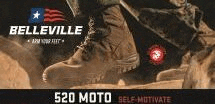Middletown, R.I., (December 7, 2015) – Wild Things, LLC, (www.wildthingsgear.com), a leading manufacturer of technical outerwear for the U.S. Military and Law Enforcement markets, is pleased to announce they have moved into a new office in Middletown, RI. The new space is much larger than their old office in Newport and is only a few hundred yards from Naval Station Newport in Rhode Island.
“Everyone is psyched for the new office.” said Ed Schmults, CEO of Wild Things. “We have more space for everything – people, product, servers, etc. It is much easier to work and get things done. Plus the Production Department can shut the door when the rest of us get too loud”
The proximity to Naval Station Newport has prompted Wild Things to offer a Beer Event every Friday afternoon. Free Beer and a chance to mess about with product prototypes and get a glimpse of what is coming next year. “We are so close to the Base that we hear the Retreat played every afternoon, said Schmults. “All you have to do is show up and bring some thirst – for beer and product – and we will take care of you”
The Wild Things has had a busy year. The Company received new investment from their Board in January and in October. “These new investments show confidence in the business plan and the Wild Things team”, said Schmults. “We are working on some innovative new product for the Military market in 2016 and have two cool growth initiatives underway in other markets, including a recently signed licensing deal for our consumer brand in Japan with Itochu. Itochu is one of the world’s most prominent licensing partners – their clients include such well known brands as Tommy Hilfiger, O’Neill, Gramicci, Tumi, Converse, Paul Smith, Bulgari and New Balance.”






















































































































